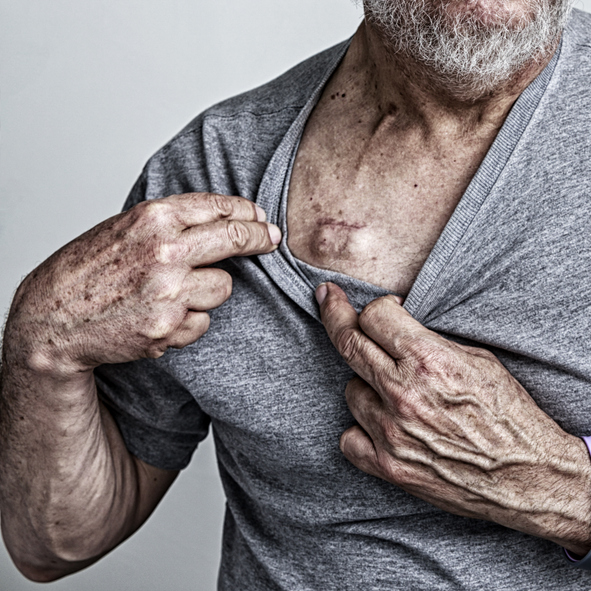Portacath and Vascular Access
What is a portacath?
A Portacath is a prosthetic tube that comes with an infusion port that is inserted into a main vein commonly in your neck or chest (Jugular or subclavian vein respectively) and is totally tunneled and secured underneath your skin. It can stay located in your body safely and accessed through needles into the port which can be easily felt and located by palpating or pressing down over it. The port usually sits under the skin in the upper chest just underneath the clavicle or collarbone.
A Portacath can be used for regular administration of medication, infusions, nutrition or even taking blood for repeat testing. It is a common device for chemotherapy, total parenteral nutrition (TPN) or regular infusions.
There are many other devices that can be inserted and stay for long periods of time that are necessarily totally buried under the skin. These include Hickman Lines, Permacaths, Haemoguards and many other types of lines. They all have access to the deep veins of your body and allow for routine blood stream access.
Where is it placed?
With the guidance of ultrasound, Dr Nedal Katib always ensures safe placement of these lines into a major central vein. Through direct ultrasound imaging, X-ray navigation and a clean sterile thorough technique these lines can be safely placed into the Internal Jugular Vein in the neck, the Subclavian Vein in the Chest, The Common Femoral Vein in the groin or even the Basilic or Axillary Vein in the arm.
Most of the time the location is the right neck as this is the safest from a complication point of view and also offers the most durable location as it is a straight path to the heart where the tip of the line usually sits just above of. The Tip of the line usually is positioned in the Sino-Atrial Junction. This location can often be hard to locate depending on the anatomy of the patient and there are some specific landmarks on X-Ray and also experience can help ensure the correct positioning of.
What are the potential risks associated with placing a Portacath?
Portacath insertion carries the same risk with any central vein access. These risks relate to the needle and the entry into the Vein. As the Vein is situated very closely to other structures in the neck and chest, there is a risk of inadvertent damage to the carotid arteries, the lungs, the nerves in the neck and also a risk of malpositioning.
In addition to the technical risks there is also a risk of the line getting infected throughout the duration of its presence. There is also a risk of the line migrating or moving and malfunctioning. The lines if not cared for properly can get blocked or even leak.
Who looks after my portacath once it’s been inserted?
You will have a team of nurses and also hospital staff that will be involved with your care of the line. Often there is a lead nurse in charge who you can contact and trouble shoot with and ask any questions. They are your best point of contact after the ward or unit that you are being looked after. You also will have your regular physician to look after you and follow up your care.

